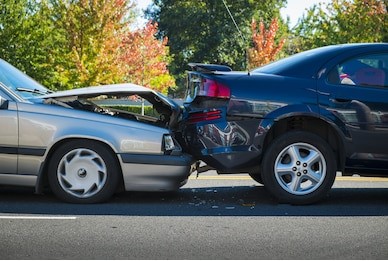- Car Accidents
In a Georgia negligence claim, a plaintiff must show (1) a duty, (2) breach of the duty, (3) proximate cause, and (4) damages. Proximate cause can be tricky to prove. In a recent appellate case, a couple sued the Georgia Department of Transportation (“GDOT”) for personal injuries after a car accident at an intersection of Highway 38 and Ben Couch Road.
SR 38 included five lanes — 2 in each direction and 1 center lane. The husband was sitting in the center lane, waiting to make a left-hand turn. It had been raining that day and was raining at the time of the accident. While waiting to make the turn, another driver was traveling westbound, lost control of his car and hit the husband’s car. The husband was badly hurt.
In their complaint against GDOT, the couple alleged GDOT had negligently designed and maintained the road where the accident had happened. Specifically, they claimed the accident was caused by water that had accumulated on the road and was not properly drained. The presented two affidavits from experts that were of the opinion that the design of the road, which did not have adequate cross-slope and elevation, permitted water to pool there and that this was not safe.
GDOT filed a motion for summary judgment on the grounds that there was no evidence it had negligently designed or failed to maintain the road. It also claimed there was no evidence of “proximate cause” because there was no evidence of standing water on the road at all. The trial court granted summary judgment.
The plaintiffs appealed. They argued that the evidence presented issues of material fact with regard to negligent design and maintenance, as well as proximate causation. Summary judgment is only proper where there is no genuine issue of material fact and the person or entity making the motion is entitled to judgment as a matter of law. A defendant who brings the motion need only point to an absence of evidence on one element of a plaintiff’s claim.
The court explained that “proximate cause” requires a plaintiff to show not only the defendant’s actions are an actual cause, but also that they are a legal cause is a legal cause of an accident. In this case, the plaintiffs did not show actual cause. GDOT had shown photographs taken at the scene of the accident that showed no standing water. This was direct evidence. That meant that the plaintiff had to show a fact that contradicted the photographs.
In this case, the plaintiffs did not present any such evidence. They presented no testimony that there was standing water. The husband had testified that the road was wet, but couldn’t remember seeing standing water on the road at the time of the accident. The experts had opined the other driver hydroplaned, but they did not opine that the hydroplaning was the result of standing water caused by road defects. They specifically admitted they didn’t know how much water was on the road.
The other driver had been cited for driving too fast for rainy weather. Hydroplaning was consistent with that explanation. Without direct evidence by the plaintiffs of standing water, the jury could not infer that defects were the proximate cause of the husband’s accident.
If you are seriously injured in a car accident, you may have grounds for a lawsuit. Experienced Atlanta personal injury attorney Terrence R. Bethune can evaluate your case and fight for any compensation you may deserve. Contact us at 404-875-7800 or via our online form.





